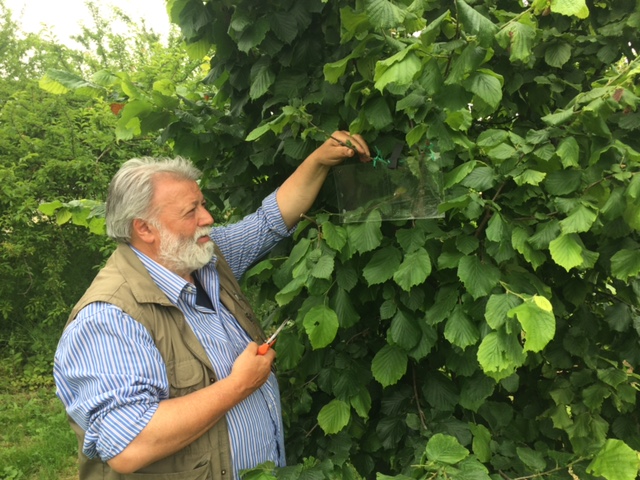Major losses in 2023. What are the causes of spoilage in hazelnuts and how to prevent it?
What is spoilage and how much does it cost us?
In 2023, the problem of spoiled has become more pronounced. These are the “spoiled” seeds, those with alterations that are already visible from the outside (spoiled “visible”), or internal (spoiled “hidden”). The latter are discovered only by cutting the seed with the special cutter.
The damaged obviously does not get paid, but – above the 1-2% threshold (first bracket) – it also triggers the downgrading of the lot. Just to make it clear, if the damaged reaches 8-10%, in addition to the unpaid percentage, the entire batch suffers a downgrade that can cause us to lose as much as half the value. In borderline cases, it may become unmarketable.
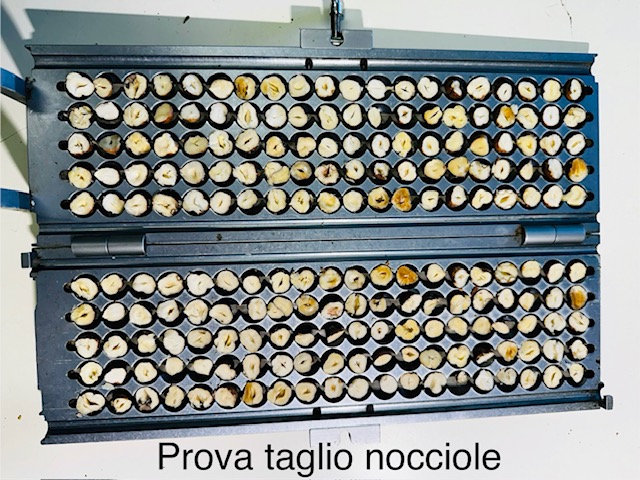
What causes spoilage?
It is caused by molds that affect the seed. These are fungi that belong to the genera Colletotrichum, Alternaria, Botryosphaeria, Diaporthe/Phomopsis, etc. A study by the University of Turin presented recently in Alba identified more than 50 species involved.
They are present on the plant as early as the time of milky ripening (late June), but they begin to develop at the expense of tissues only from the time the fruits fall to the ground ripe.
Although they are different agents, spoilage needs a common condition to occur: the fruits’ stay on the ground in moist and hot conditions. Basically, it is soil wetting (even simple dews) and persistent rainfall that cause spoilage.
How is it prevented?
The good news is that, regardless of the fungi involved, the process of spoilage can be avoided:
- By harvesting the hazelnuts in a timely manner;
- By drying them to bring their moisture content below 12 percent.
The stay of the fruit on the ground is a very delicate period for the development of spoilage.
We need to reduce the time to 10/12 days, maximum two weeks. Ripening can take 3-4 weeks. Therefore, with an eye on the weather, 2 harvesting passes need to be planned.
- The first when about 50% of the fruit has fallen to the ground;
- The second as soon as ground fall is finished, in any case no more than two weeks later.
Comparison test: harvesting in 2 passes, compared with single harvest at the end of the season.
This trial was conducted in Alta Langa in 2023. It is a comparison carried out on the same plot between harvesting in two passes versus the witness, which was harvested in one pass when all the hazelnuts had fallen to the ground.
| Harvest date | 1st pass 25/08/2023 | 2st pass 9/09/2023 | Single harvest at end of season 30/09/2023 |
|---|---|---|---|
| Total damaged | 1% | 1,8% | 14,96% |
| Visible damaged | – | 0,7% | 12,4% |
| Avaricious occult | 0,5% | 0,4% | 2,56% |
| Raggedy | 0,5% | 0,7% | – |
| Hazelnut moisture (external) | 14,5% | 24% | 28% |
| Semi-humidity (internal) | 4,70 | ||
| Yield at the shelling machine | 48,80% | 47,40% | 32% |
Witness collected in single pass to September 30, 2023
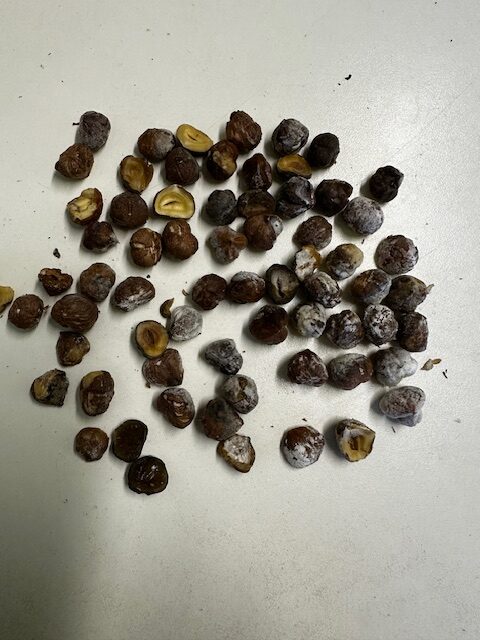
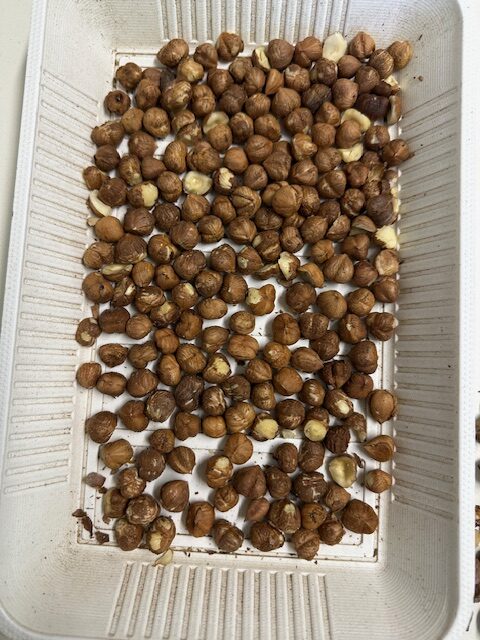
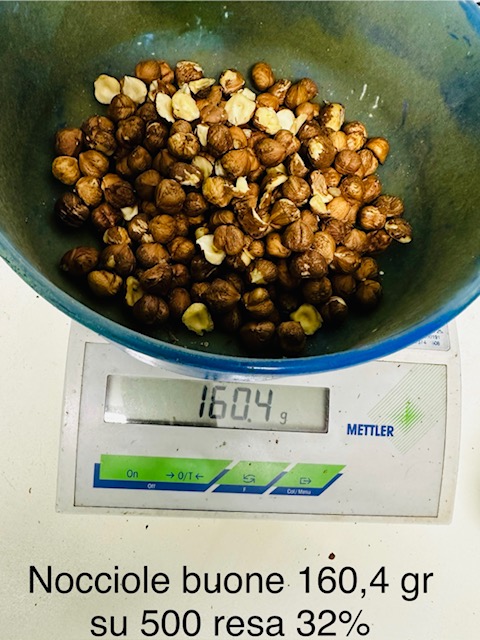
Rainfall occurred in late August (27, 28, 29) and September. Many hours of wetting maintained high humidity conditions. This was topped by high temperatures for the season.
With an eye on the weather, the first harvest was done before the rains, bringing home the fruit that had fallen in the previous two weeks. The second was done before the September 16 rains.
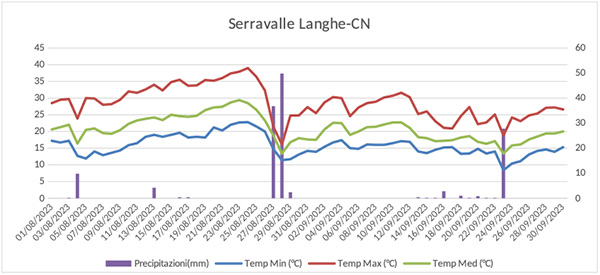
The results speak for themselves. The spoilage was 1% in the first pass and stayed below 2% in the second pass. If we had waited until all the hazelnuts had fallen (witness), to keep up with the crumbs, we would have had our crop compromised. The lot harvested in one pass depreciated by more than 50%.
Hence the need for two timely harvesting passes, followed by cleaning and drying on the farm.
The post-harvest
As soon as we bring the hazelnuts home, we need to clean and dry the product in a timely manner. To stop the development of spoilage, we need to bring the fruit moisture below 12%, which corresponds to a seed moisture of less than 4-5%.
Hazelnut moisture (external) is measured with probe hygrometers, such as Acqua-Boy. The internal one is measured with special hygrometers, of which there are various models on the market.
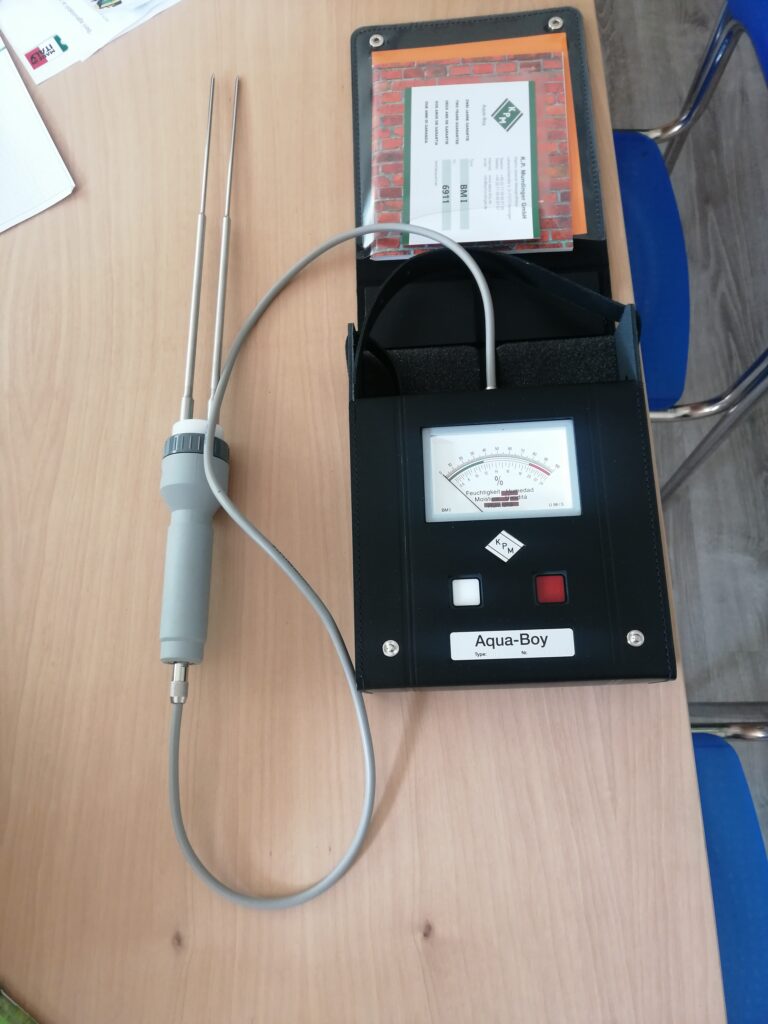
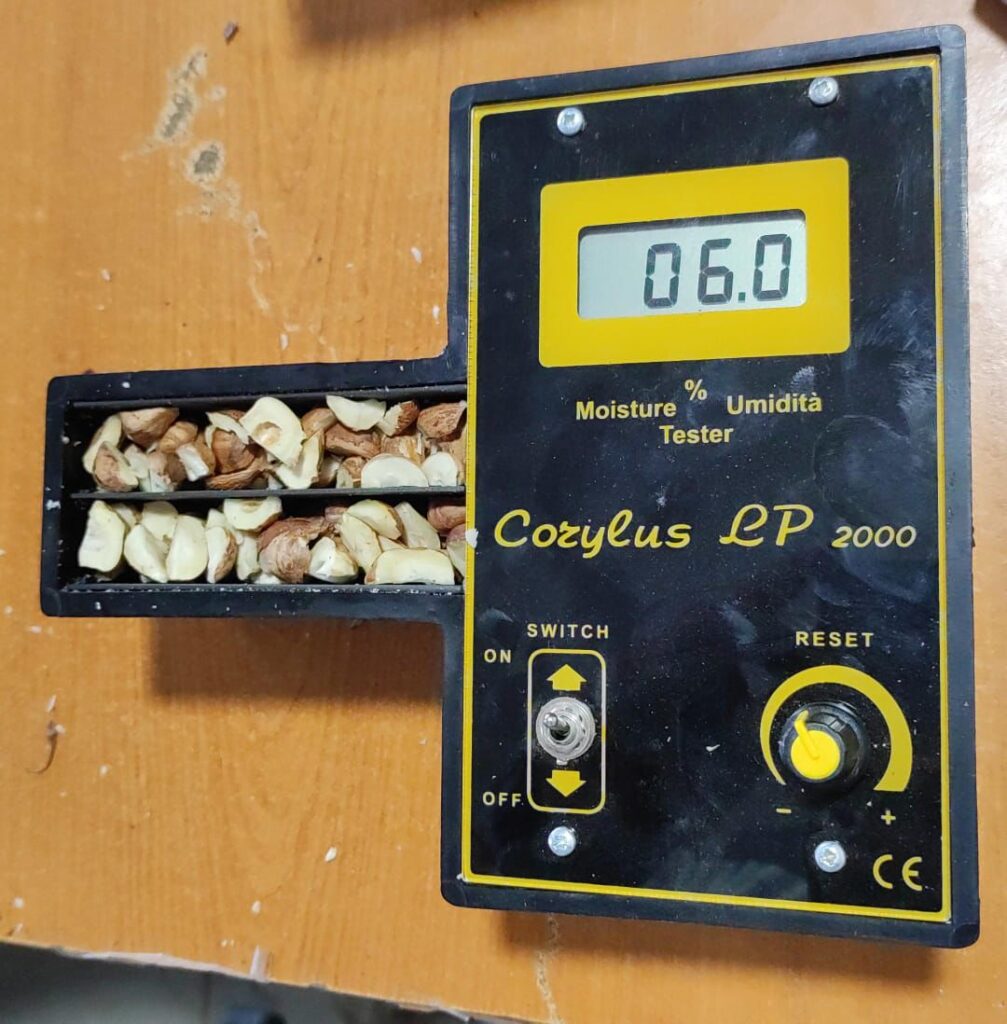
Il prodotto pulito ed essiccato si può conservare per un lungo periodo in cassoni di stackable net, with a capacity of about 10 quintals.
The equipment needed by a post-harvest farm is:
- pre-cleaner, which roughs out major impurities (stones and wood)
- cleaner, which removes all impurities including empty hazelnuts
- dryer.
All with working capacity to be calculated according to the production potential of the farm.
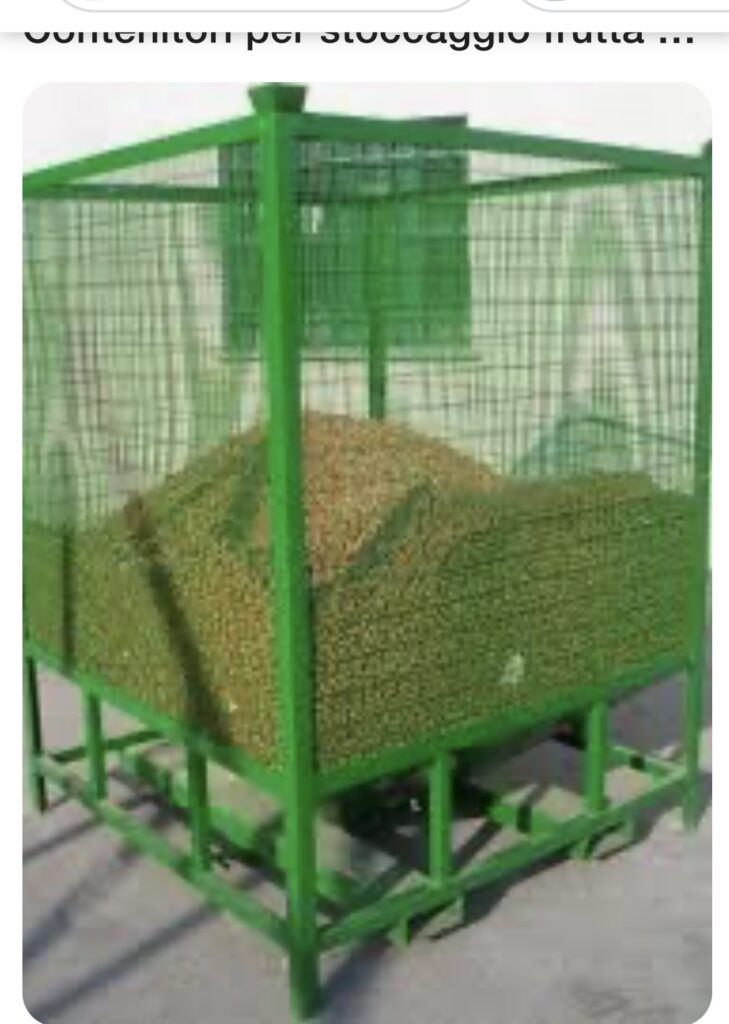
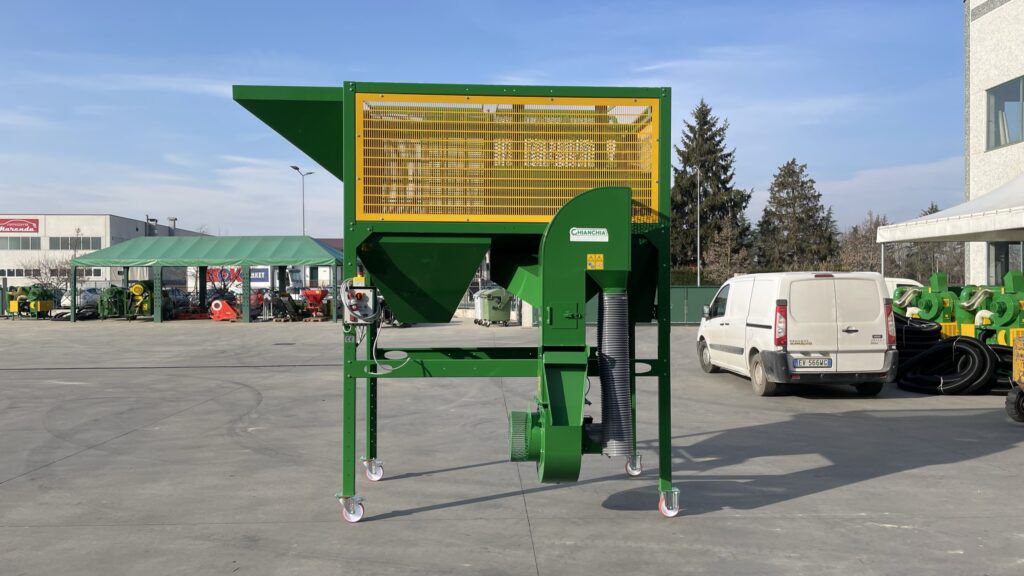
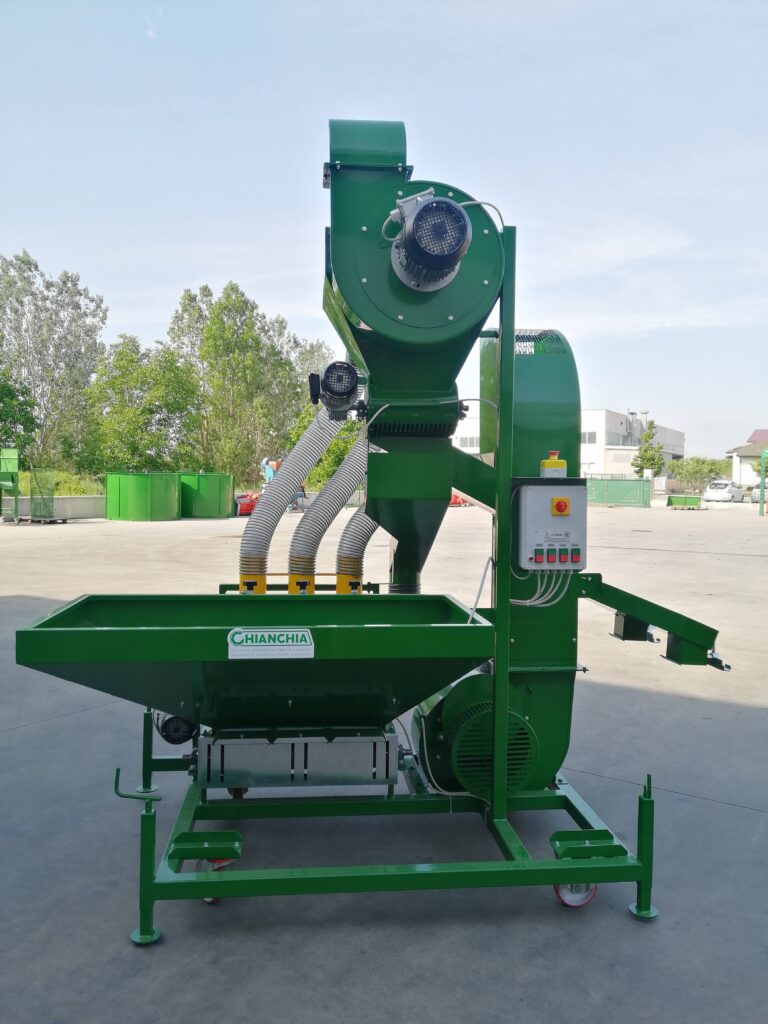
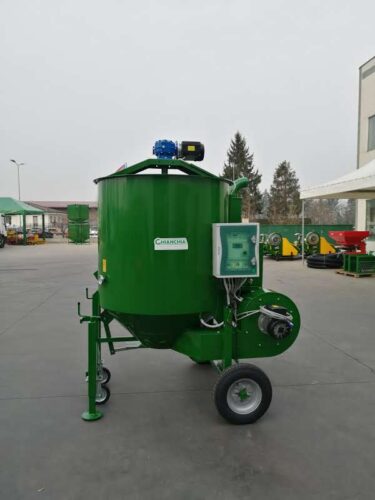
The ripening of hazelnuts in Piedmont
Italian hazelnuts naturally fall to the ground free of the wrapper. Traditional Turkish varieties, on the other hand, remain enclosed in the wrappers, which are harvested by hand. The hazelnuts are then “de-husked” by hand at the farmhouse, somewhat like our grandparents did with the
corn cobs.
Tonda Gentile Trilobata begins to fall to the ground in the second week of August, anticipated by 4-5 days by Tonda di Biglini, which is a mutation of it.
Tonda Gentile Romana and Nocchione are about 20 days later: early September. Tonda di Giffoni in Piedmont is later: third decade of September.
The duration depends partly on the variety and partly on the weather, in the sense that if it is hot, the cascola is more concentrated. It normally takes two to four weeks. Tonda Gentile takes about three weeks.
The problem occurs with the later varieties. Giffoni ripening-especially in higher environments such as the Alta Langa, or Saluzzese-lasts until October. As temperatures drop and the fall season begins, ripening slows and we find ourselves arranging harvests in early October.
Young plants lag a few days behind adult plants. In 2023 the fall to the ground was very prolonged. In these cases, it is necessary to consider whether it is better to wait for all the fruit to fall, or to intervene early to avoid spoilage.

